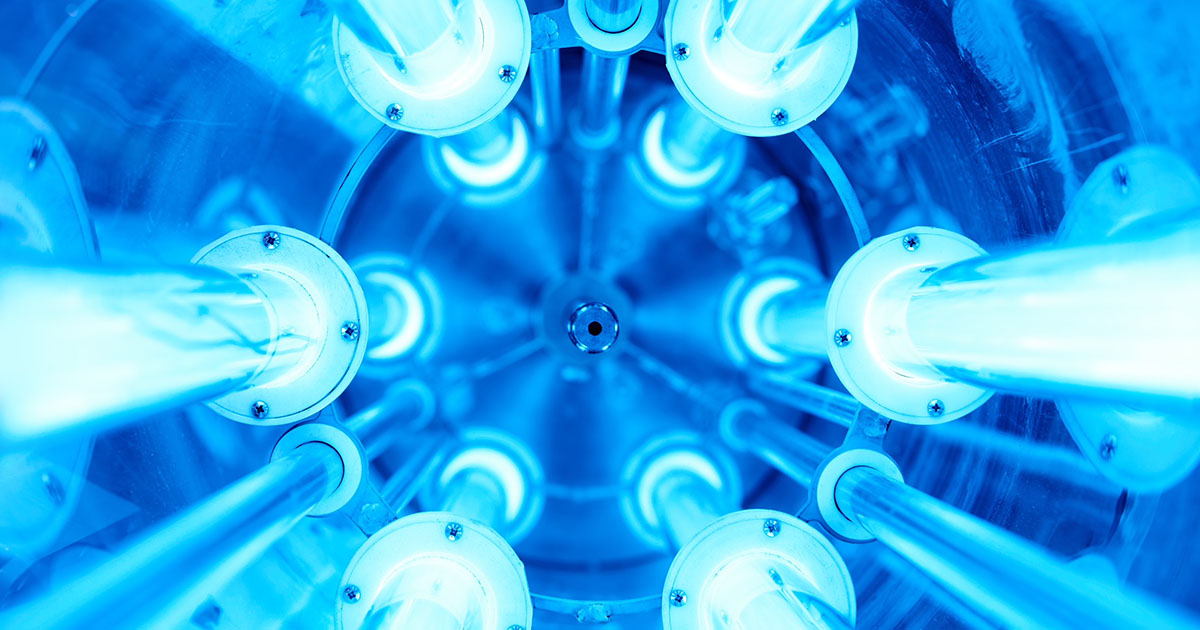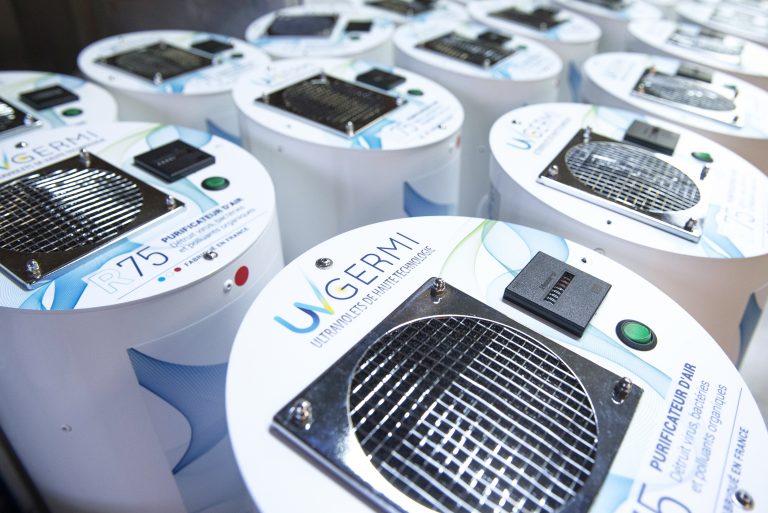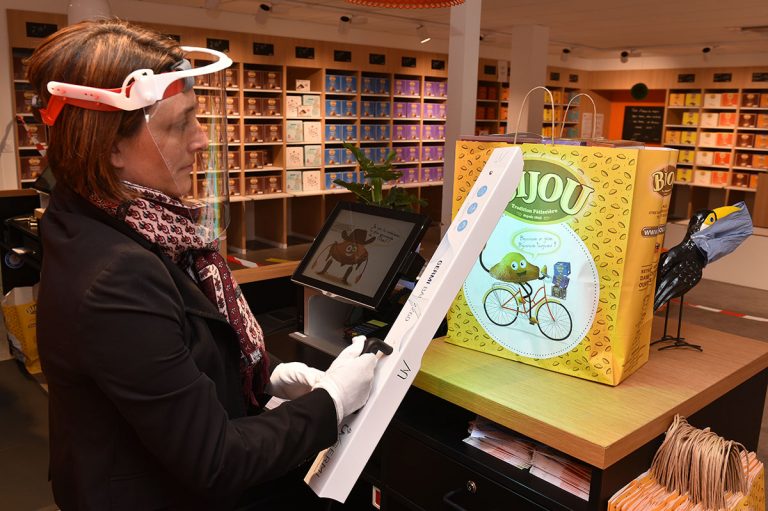The sun is known for its purifying effect on water by emitting light that is invisible to the human eye: ultraviolet light. These ultraviolet rays, generally called UVs, have wavelengths between X-rays (used for radiography and scanners) and visible light. There are different UV rays: UV-A, UV-B and UV-C. The latter, with a specific wavelength of 253.7 nanometres, have a natural sterilising action on bacteria, viruses and parasites. In other words, the physical reaction of this light breaks the DNA of infectious microorganisms that are a risk to human health.
When in contact with UVs, they become harmless.
The treatment includes exposing a fluid or a surface to UV radiation. Ultraviolet radiation technology is applied for the treatment of air, water and surfaces, without using chemicals.
of air, water, surfaces.

 UV technology
UV technology
Depending on the environments in which we evolve, air is contaminated, at varying concentrations, by odours, viruses, coronaviruses, bacteria and moulds.
This usually concerns any indoor environment with a controlled atmosphere and spaces open to the public.
The environmental and public health challenge is to clean the air in these small or large indoor spaces without using chemicals.
UV technology is able to meet air disinfection requirements in industrial production workshops (pharmaceutical and cosmetics industry, food industry, etc.).
It also prevents health risks in medical and hospital environments. It decontaminates the air in planes, public transport, schools, offices, waiting rooms, changing rooms, i.e. any enclosed spaces.

 UV technology
UV technology
Water treatment affects everyone and everything: people, animals, our environment, the planet.
UVs have been used for many years to disinfect water to produce drinking water. That was the first application of ultraviolet radiation technology. It was used in France as early as 1910. At that time, this technology was very promising, but still lacked development. In the 1970s, UV technology for the treatment of water for human consumption and the treatment of wastewater in wastewater treatment plants was improved and developed and proved its worth.
Growing population, overproduction, overconsumption started generating increasing volumes of wastewater and led to the extension of UV technology to wider applications. The target is to have water that complies with European directives and increasingly numerous health regulations.
For this reason, new needs are appearing in agriculture (greenhouses), livestock (water for animal feed) or the pharmaceutical and agri-food industry to continually improve water quality. Treating seawater is also becoming a necessity for fish and shellfish farming and the welfare of live animals in zoos and aquatic parks. But not only. Thalassotherapy and balneotherapy centres also need effective treatment to provide their patients with water that meets health regulations.
In compliance with the regulations for the protection of human health, swimming pool water also requires treatment that can reduce chlorine level.
The low pressure UV dechloramination process meets the needs of communities in public swimming pools, hotels, campsites and spas in public and private swimming pools.
But the major challenge remains the preservation of this vital resource for the planet. After treatment, water can be discharged into the sea without any risk to the environment or reused for other purposes.
The treatment of water for its reuse is a duty for tomorrow’s world.
 UV technology
UV technology
Only a few years ago, chemical-free surface disinfection was only used in industrial (agri-food, pharmacy, cosmetics), medical and hospital environments.
For what purpose? To eliminate any bacteriological risk in environments where products we ingest, we apply to our skin and we use as medication are produced. With the rise of influenza A (H1N1 virus) in 2009 and Covid19 (coronavirus) ten years later, surface disinfection has become a major public health issue.
Today, the priority is to slow down epidemics by disinfecting all surfaces likely to be contaminated. UV radiation technology is quick, easy and effective at disinfecting all surfaces without needing to use detergents.

